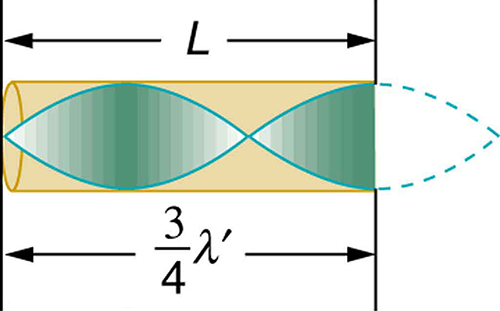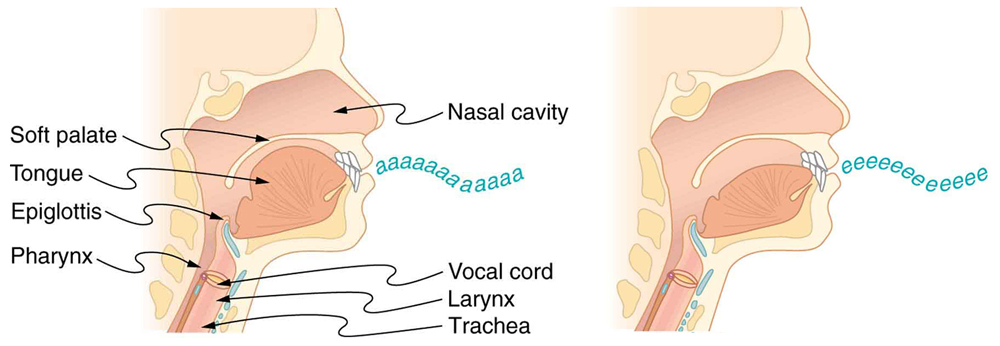| << Chapter < Page | Chapter >> Page > |


The fundamental and overtones can be present simultaneously in a variety of combinations. For example, middle C on a trumpet has a sound distinctively different from middle C on a clarinet, both instruments being modified versions of a tube closed at one end. The fundamental frequency is the same (and usually the most intense), but the overtones and their mix of intensities are different and subject to shading by the musician. This mix is what gives various musical instruments (and human voices) their distinctive characteristics, whether they have air columns, strings, sounding boxes, or drumheads. In fact, much of our speech is determined by shaping the cavity formed by the throat and mouth and positioning the tongue to adjust the fundamental and combination of overtones. Simple resonant cavities can be made to resonate with the sound of the vowels, for example. (See [link] .) In boys, at puberty, the larynx grows and the shape of the resonant cavity changes giving rise to the difference in predominant frequencies in speech between men and women.

Now let us look for a pattern in the resonant frequencies for a simple tube that is closed at one end. The fundamental has , and frequency is related to wavelength and the speed of sound as given by:
Solving for in this equation gives
where is the speed of sound in air. Similarly, the first overtone has (see [link] ), so that
Because , we call the first overtone the third harmonic. Continuing this process, we see a pattern that can be generalized in a single expression. The resonant frequencies of a tube closed at one end are
where is the fundamental, is the first overtone, and so on. It is interesting that the resonant frequencies depend on the speed of sound and, hence, on temperature. This dependence poses a noticeable problem for organs in old unheated cathedrals, and it is also the reason why musicians commonly bring their wind instruments to room temperature before playing them.
(a) What length should a tube closed at one end have on a day when the air temperature, is , if its fundamental frequency is to be 128 Hz (C below middle C)?
(b) What is the frequency of its fourth overtone?
Strategy
The length can be found from the relationship in , but we will first need to find the speed of sound .
Solution for (a)
(1) Identify knowns:
(2) Use to find the fundamental frequency ( ).
(3) Solve this equation for length.
(4) Find the speed of sound using .
(5) Enter the values of the speed of sound and frequency into the expression for .
Discussion on (a)
Many wind instruments are modified tubes that have finger holes, valves, and other devices for changing the length of the resonating air column and hence, the frequency of the note played. Horns producing very low frequencies, such as tubas, require tubes so long that they are coiled into loops.
Solution for (b)
(1) Identify knowns:
(2) Enter the value for the fourth overtone into .
Discussion on (b)
Whether this overtone occurs in a simple tube or a musical instrument depends on how it is stimulated to vibrate and the details of its shape. The trombone, for example, does not produce its fundamental frequency and only makes overtones.

Notification Switch
Would you like to follow the 'College physics' conversation and receive update notifications?